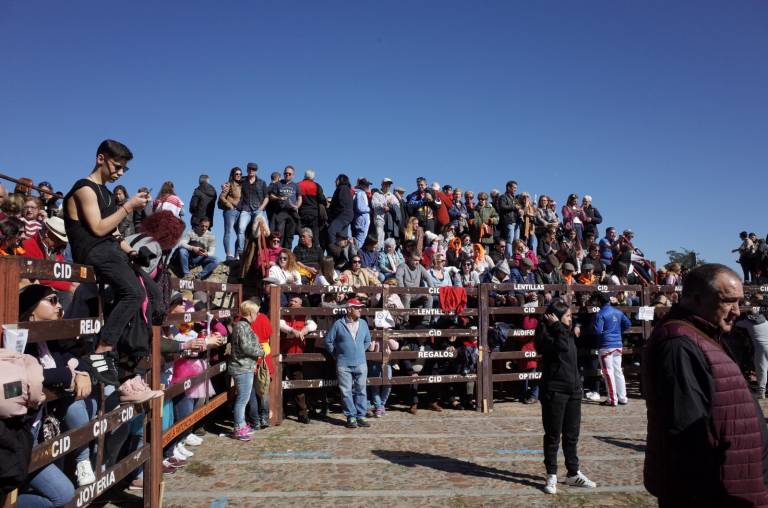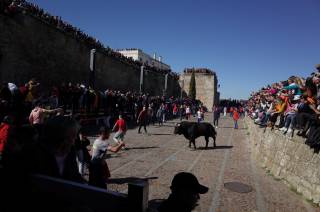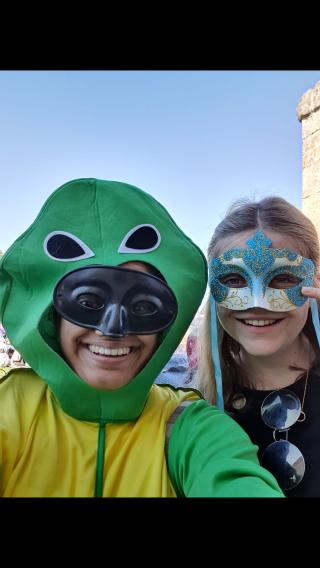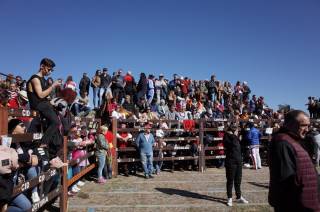"I had always been intrigued but perturbed by the concept of the bull run, which is undoubtedly one of the most controversial aspects of Spanish culture." Isobel spent her second term in Salamanca. In her 4th blog she shares her experience at the Bull run.

Having spent Term 1 in Montreal, a cosmopolitan and bustling major city with tons of entertainment on offer, I found adjusting to the pace of life in Salamanca somewhat difficult. I quickly began to feel that I had exhausted what the beautiful but sleepy city had to offer me. Therefore, I decided that I would enlist a group of friends and explore further afield; one of the advantages of Salamanca being so popular with international students is that a number of organisations provide trips and cultural activities.
I had always been intrigued but perturbed by the concept of the bull run, which is undoubtedly one of the most controversial aspects of Spanish culture. Therefore, when a friend recommended that we attend the Carnaval del Toro in nearby Ciudad Rodrigo, I was unsure. I had of course heard horror stories about the injuries incurred by foolishly reckless foreigners who underestimated the ferocity, size and speed of the bulls; perhaps more importantly, I struggled with the moral side of what PETA refers to as a ‘death march’. I eventually decided to spectate and make my mind up for myself, on the condition that there was no bullfight.The Carnaval del Toro is considered to be one of the oldest carnivals in Spain, with roots as early as 1493. When my flatmate and I arrived at the bus terminal in Salamanca we were embarrassed to realise that we were the only ones not in costume. Hundreds of students piled onto the buses, in which we were told to sign documents stating that if we were to run, the company would not be liable for any injuries. Once we arrived, we quickly made our way to the course and found an appropriate viewpoint; two of my friends left the group to participate in the run. The town bell rang to announce the beginning of the encierro, and we began to hear a faint thudding somewhere in the distance. Perhaps ignorantly, I don’t think that I had quite understood just how enormous the bulls were until I saw them plough down the path. Without even rearing onto their hind legs they were easily up to chest-height. I was also struck by the vast age range of the runners, from teenagers much younger than me to elderly men. What’s more, it seemed to me that all of the runners were men – make of that what you will! I was finally able to heave a sigh of relief when my friends - one dressed as the Pope and one as a barrel – re-joined us.That evening, exhausted, sunburnt and ears ringing on the bus back to Salamanca, I reflected on the day. I realised that, having spent the afternoon enjoying the carnival procession and revelling in the marquee, I had not stopped to think what might have happened to the bulls that had entertained me that morning. I re-examined the programme that the company had given us that morning, and there was no mention of a bullfight; so, I checked the official carnival website where it was proudly advertised. I wonder now whether the company knew that many of the international students would have objected to seeing the bulls be slaughtered and wouldn’t have gone. Despite not seeing the bullfight, my friends and I agreed that we couldn’t help but feel complicit in the cruel and merciless torment, torture and murder of a beautiful animal.
By: Isobel Helme




 Close
Close

